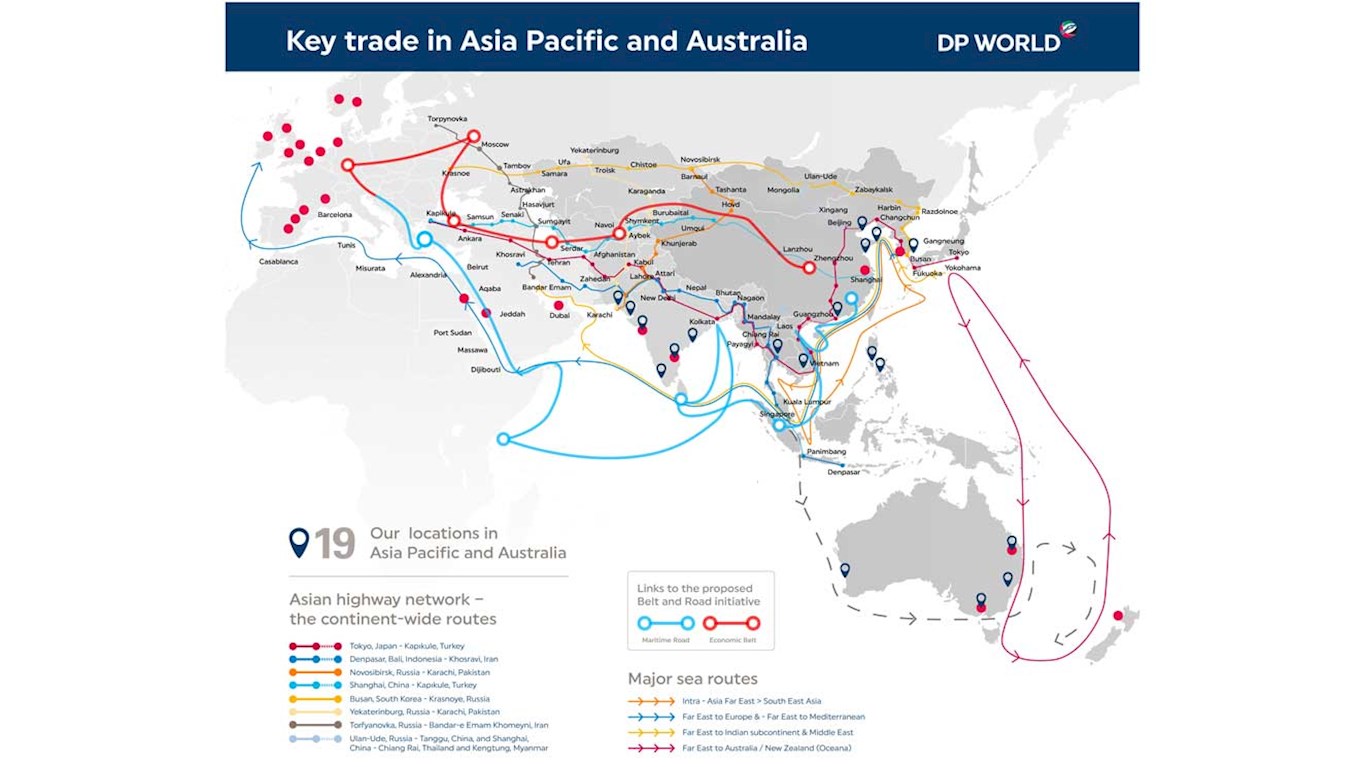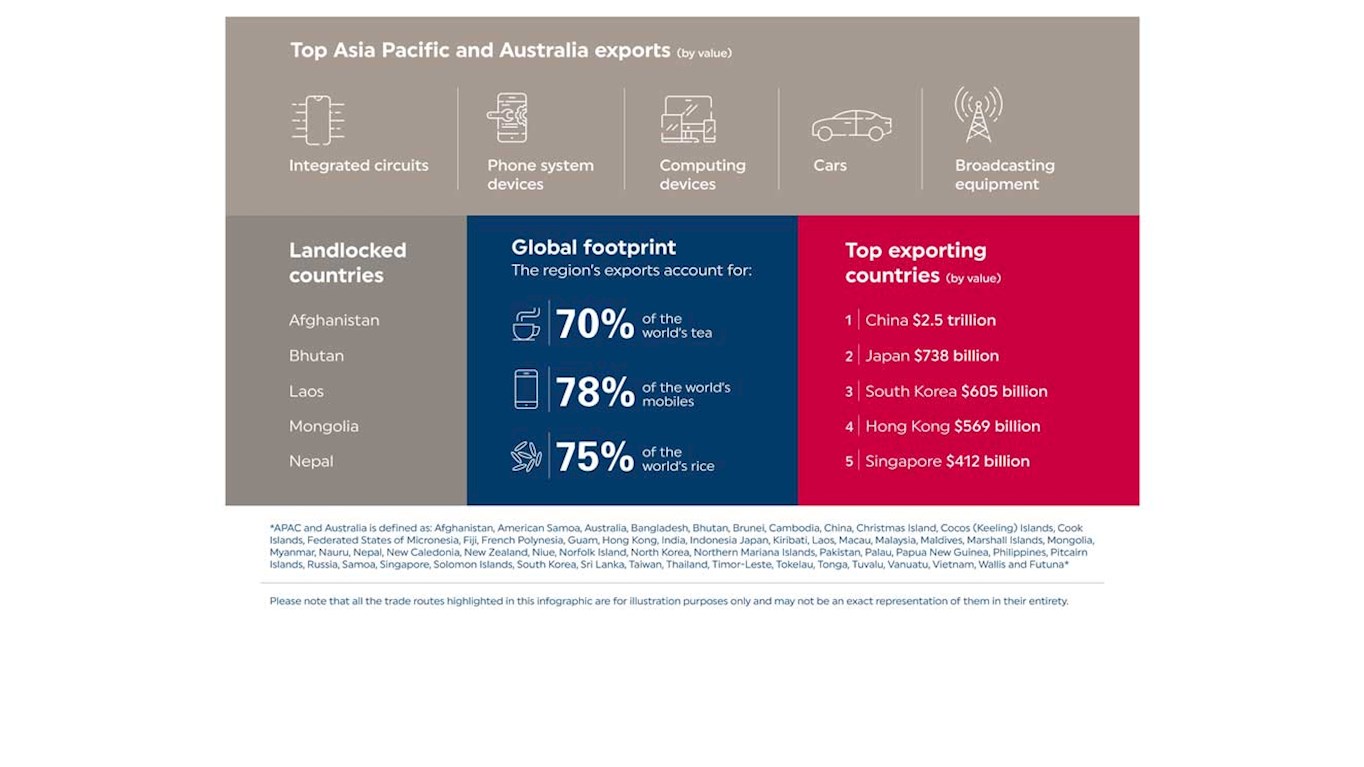-
- Global
- Algeria, Djazair
- Angola
- Argentina
- Australia
- Belgium
- Brazil
- Chile
- China
- Cyprus
- Dominicana
- Ecuador
- Egypt
- EU Intermodal
- Hong Kong
- India
- Indonesia
- Malaysia
- Mozambique
- New Zealand
- Pakistan
- Peru
- Philippines
- Romania
- Rwanda
- Saudi Arabia
- Senegal
- Serbia
- Singapore
- Somaliland
- South Korea
- Spain
- Suriname
- Thailand
- Turkiye
- United Arab Emirates
- Ukraine
- United Kingdom
- Vietnam
-
Menu
-
SOLUTIONS
Related content
![relatedcontent]()
Data Fills The Gaps In Modern Supply Chains
Global supply chains are no strangers to disruption, whether caused by trade disputes, geopolitics or the unpredictable forces of climate change. Amidst these challenges, an often-overlooked vulnerability lies in supply chain data gaps.
Read more![relatedcontent]()
Rail Networks Transform Supply Chains
Rail freight has the potential to revolutionise supply chains in both developed and developing nations, providing a key role in promoting sustainability and economic growth.
Read more -
INDUSTRIES
Related content
![relatedcontent]()
Making Healthcare Equity Reality
Healthy societies transform economies, yet the pandemics of the past few years have demonstrated that healthcare logistics is a complex beast and unique to that of any other sector.
Read more![relatedcontent]()
The Future Of EVs Is In Our Supply Chains
Electric vehicles (EVs) are proving to be the most popular replacement for fossil fuel cars. So much so that by 2030 electric vehicles will represent over 60% of vehicles sold globally.
Read more -
INSIGHTS
Related content
![relatedcontent]()
Our Stories
We connect people, markets and nations to change what's possible for everyone.
Read More -
SUSTAINABILITY
Related content
![relatedcontent]()
Changing the perception of water
Water is crucial for life on Earth and vital for our well-being. Businesses, including ours, can play a significant role in changing how water is used.
Read more![relatedcontent]()
Climate proofing the supply chain
We examine three climate scenarios, assessing the potential impact of weather hazards across 50 ports and terminals in our global portfolio.
Read more
- SOLUTIONS nav
- INDUSTRIES nav
- INSIGHTS nav
- SUSTAINABILITY nav

Trade opportunities along the new silk road
With the Asian century set to begin, it is vital that businesses consider the burgeoning opportunities offered by the new Silk Road now.
Asia’s global economic footprint has come of age, making it vital for businesses the world over to have a robust presence in the region.
It’s not just the remarkable rise of China and India’s rival economies; many other Asian countries are helping the continent to regain the economic might that it boasted centuries ago.
Members of economic cooperation organisation ASEAN such as Indonesia, the Philippines, Thailand and Singapore are powering the region with attractive young manufacturing workforces, increasingly affluent domestic markets, high-value knowledge economies and resource-focused industries.
This dynamic continent not only has half of the world’s middle class, it has much younger populations than the West and some countries are notably flourishing after bouncing back successfully from Coronavirus lockdowns.
That’s why the Asia powerhouse is expected to account for half of all global GDP (in purchasing power parity terms) by 2040 - compared to 32 per cent back in 2000.
Down the Belt and Road
Even though Covid-19 disrupted international trade, we live in a global economy that fundamentally relies on goods and services crossing borders. The Asia Pacific region’s role here is pivotal, with 12 of the top 15 trade lanes set to connect Asian countries, internationally, by 2030.
China, in particular, is forging ahead with its Belt and Road Initiative (BRI) that involves creating attractive corridors for global businesses to easily move their goods to foreign markets.
While international companies are generally aware of the BRI, many do not know how to make the best use of it. But as the initiative’s focus on big infrastructure projects evolves, Chinese private companies will become more active in BRI countries, opening huge opportunities for local and international partners in a wide variety of sectors.
DP World is perfectly positioned on the New Silk Road, at the intersection where East meets West. In terms of sea-based developments, we are partners in ports including Qingdao and Hong Kong, while overland our London Gateway received the first goods train to reach Europe from China in 2019 and have over 20 locations situated on the Belt and Road Initiative.
With our considerable experience in the world of infrastructure, we fully understand the BRI’s importance. China is leading the way in creating new trade hubs and developing new supply points for the likes of raw materials, rare earths, and energy sources such as oil and natural gas.
New technologies are also bringing a new dimension to the sometimes-questioned sustainability of the BRI.
As President Xi Jinping said back in May 2017, at the Opening Ceremony of The Belt and Road Forum for International Cooperation: “We should pursue innovation-driven development and intensify cooperation in frontier areas such as digital economy, artificial intelligence, nanotechnology and quantum computing, and advance the development of big data, cloud computing and smart cities so as to turn them into a digital Silk Road of the 21st century.”
Advantageous geography
The strategic importance of the Middle East’s location in terms of global trade is unrivalled. Sitting at the crossroads of Asia, Africa and Europe, the region acts as a junction for five seas as well as important maritime routes, including the Strait of Hormuz, off the shores of the United Arab Emirates (UAE).
The BRI has helped to spur strong economic ties between Asian nations and their Middle East neighbours, as various countries seek to keep pace with China in the race to secure trade links. India has been visibly active in this regard, particularly in terms of the increasingly deep energy relationship with the Middle East.
India and the UAE have already agreed investment deals; two years ago, the Abu Dhabi Investment Authority signed a $1 billion investment on energy, transportation, water, and infrastructure.
DP World has played an active role in this relationship, thanks to its involvement in various partnerships, including a joint venture that acquired a controlling stake in Indian railway logistics company Kribhco Infrastructure in 2019.
Such collaborations show the UAE and the broader Middle East’s importance to the Asia Pacific region, and point to the prominent influence Asian customers will have on the future of global trade.
Affirmative change
While China and India may continue to be the dominant forces, other Asian nations are emerging as important manufacturing, consumer or logistical hubs.
Companies must invest in high-potential countries and trade lanes, develop comprehensive omni-channel strategies with robust e-commerce capabilities, and partner with experts in areas such as logistics to enable agile regional supply networks.
The unique ‘pause button’ that Covid-19 affords gives the opportunity to analyse and improve Asia Pacific focused operations, and to tap into the next exciting chapter of the Silk Road journey.


We use cookies on this site to enhance your user experience. By continuing to visit this site you agree to our use of cookies. Learn More








